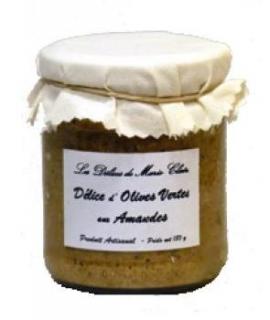Considering the outrageous scale of the E. coli O104 outbreak in sprouts, the lessons learned are incredibly banal.
The Commission of the European Communities writes in a new report that from May to July 2011, a major outbreak occurred in the European Union due to contamination of sprouted seeds by Shiga toxin-producing Escherichia coli (STEC) O104:H4 with clusters in the North of Germany and in the Bordeaux region in France.
Based on the date of onset, the outbreak started in Germany at the beginning of May and reached a peak on 22 May 2011. On 22 June 2012, an increase of hemolytic-uremic syndrome .jpg) (HUS) and bloody diarrhea cases was also reported in the Bordeaux region of France. A few days later the strain was identified as the same as in German outbreak.
(HUS) and bloody diarrhea cases was also reported in the Bordeaux region of France. A few days later the strain was identified as the same as in German outbreak.
As soon as the outbreak was notified, the German and Länder health services were mobilized, launching of alert systems at all levels (local, national, EU and international) and all parties involved collaborated intensively. The German Robert Koch Instituted reported 855 cases of HUS and 2987 cases of bloody diarrhoea (without HUS), including 53 fatalities in Germany in its final presentation and evaluation on the outbreak. An additional 54 HUS (incl. 2 deaths) and 83 diarrhoea cases were reported through the European Centre for Disease Prevention and Control (ECDC) as linked to the German cluster in other countries of Europe, Canada and the United States. The Bordeaux cluster counted for 24 cases, including 7 HUS.
The losses for farmers in the fruit & vegetable sector were estimated at least 812 Million (Mio) € in the first 2 weeks. In addition a temporary export ban of vegetables to Russia occurred, constituting an annual value of 600 Mio €.
The objective of this document is to indicate possible actions from the EU to prevent similar outbreaks or to limit their scale and to be better prepared for food-borne outbreaks in general. Actions are also needed to strengthen coordination between the health and food safety authorities in line with the "One Health" principle.
And these are the big lessons learned:
• strengthen EU capacities to ensure protection of citizens against cross border health threats;
• awareness of the need for improvement of hygiene in food of non-animal origin including primary production and import by better enforcement of existing hygiene provisions;
• enhanced preparedness through regular practical exercises involving all key players in an outbreak;
• respect of responsibilities and involvement of all partners in outbreak management;
• better co-ordinated and clear communication;
• improve tools of market intervention and product promotion to reduce reaction time to crises outbreak and thereby limit the negative economic impact on the EU sector; and,
• strengthen public-private initiatives linking producers (incl. processing, retail and trade) and citizen/consumers to increase awareness and enhance communication and knowledge.
None of these would have presented the outbreak, although may limited things. And nowhere is the probable cause addressed: that sprout seeds themselves can become contaminated.

.jpg) mortality and hemolytic uremic syndrome (HUS) rates observed in healthy adults.
mortality and hemolytic uremic syndrome (HUS) rates observed in healthy adults..jpg) involved in adhesion or invasion.
involved in adhesion or invasion. .jpg) average of 119 cases per year, with a range of 104 to 132, and no discernable trend.
average of 119 cases per year, with a range of 104 to 132, and no discernable trend. toxicological and descriptive epidemiological evidence, to have been widely distributed, commercially produced foods.
toxicological and descriptive epidemiological evidence, to have been widely distributed, commercially produced foods.(1).jpeg) Likewise, the Finnish outbreak affected a single household, and could be explained by only one contaminated jar of stuffed olives, despite the batch being part of a lot of 900 imported into Finland, and the product having been exported to many countries in Europe and beyond.
Likewise, the Finnish outbreak affected a single household, and could be explained by only one contaminated jar of stuffed olives, despite the batch being part of a lot of 900 imported into Finland, and the product having been exported to many countries in Europe and beyond. bacteria in Egyptian fenugreek seed have turned up negative, said Salah Mu`awad, the chief of the Egyptian Agriculture Ministry services and follow up division.
bacteria in Egyptian fenugreek seed have turned up negative, said Salah Mu`awad, the chief of the Egyptian Agriculture Ministry services and follow up division. Since January 2010, 334 cases in 65 clusters were reported from five European countries: the United Kingdom, Norway, France, Sweden and Denmark. The article describes the available epidemiological and microbiological evidence of these outbreaks.
Since January 2010, 334 cases in 65 clusters were reported from five European countries: the United Kingdom, Norway, France, Sweden and Denmark. The article describes the available epidemiological and microbiological evidence of these outbreaks. Or Cheetos.
Or Cheetos.